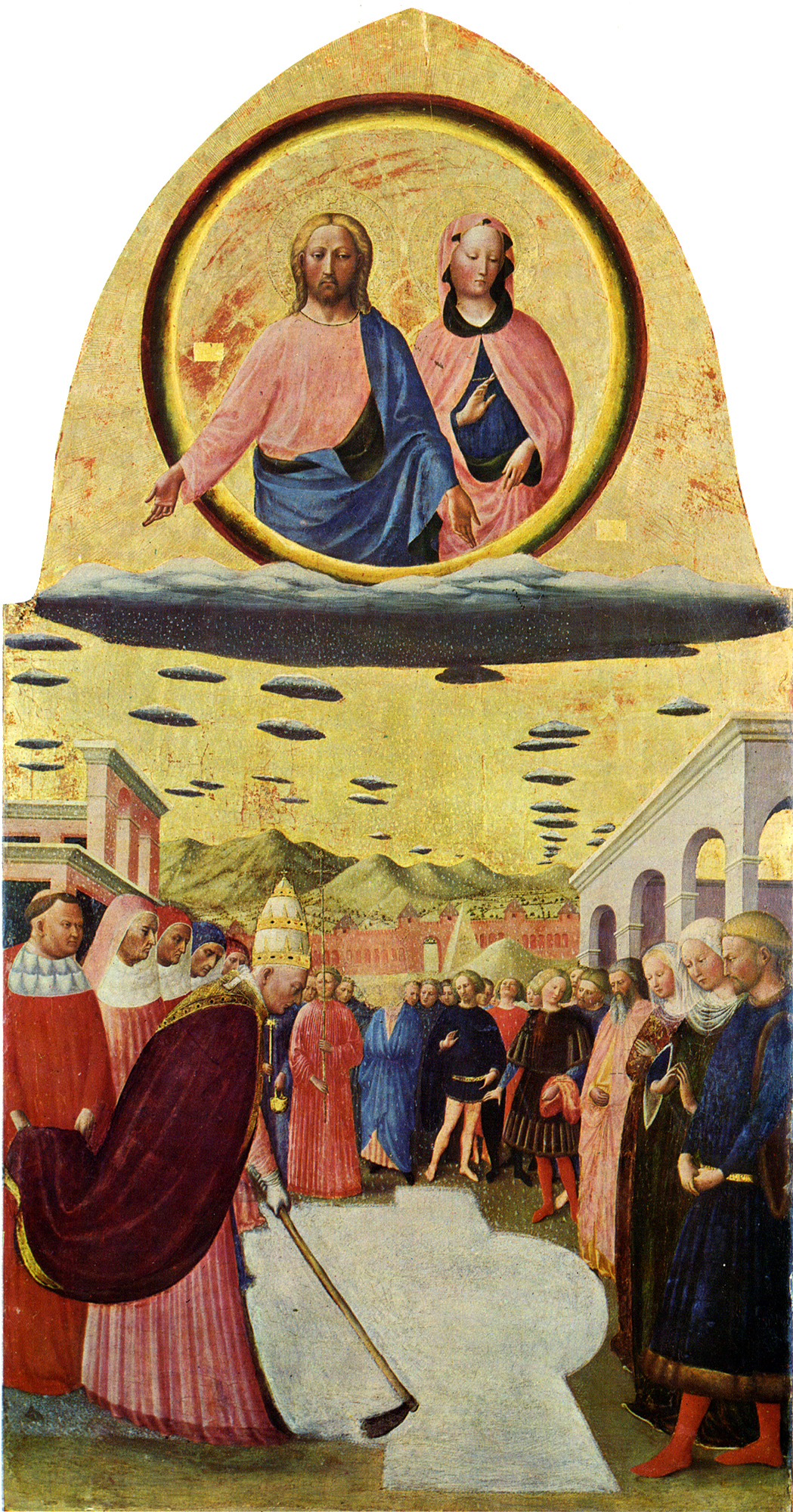Masolino, The Foundation of Santa Maria Maggiore, c1427-8
Source: Wikimedia Commons
The snow has been melting here and the passage of days has left Kline-like compositions on the ground mapping the departure of vehicles, the clearing of paths and the making of snowmen. Looking out of the window now it is not clear why certain patches of snow remain, as if they have some special significance. Masolino's central panel for the Santa Maria Maggiore Polyptich shows Pope Liberius marking out the site of the future church after a miraculous summer snowfall on August 5th 352. The snow had been predicted in a dream shared by the Pope and a rich Roman couple who wanted to donate their wealth to a worthy cause. In Masolino's painting, snow floats through the golden sky beneath a fleet of clouds that resemble UFOs. From the largest of them Christ and Mary look down and snowflakes fall more thickly on the place where the new building will rise, a permanent legacy of this fleeting phenomenon. Later depictions of the legend by artists like Grünewald and Murillo treat the subject more naturalistically and less interestingly. Today the miracle of the snow is recreated in Santa Maria Maggiore and other churches every year with a shower of flower petals.

No comments:
Post a Comment